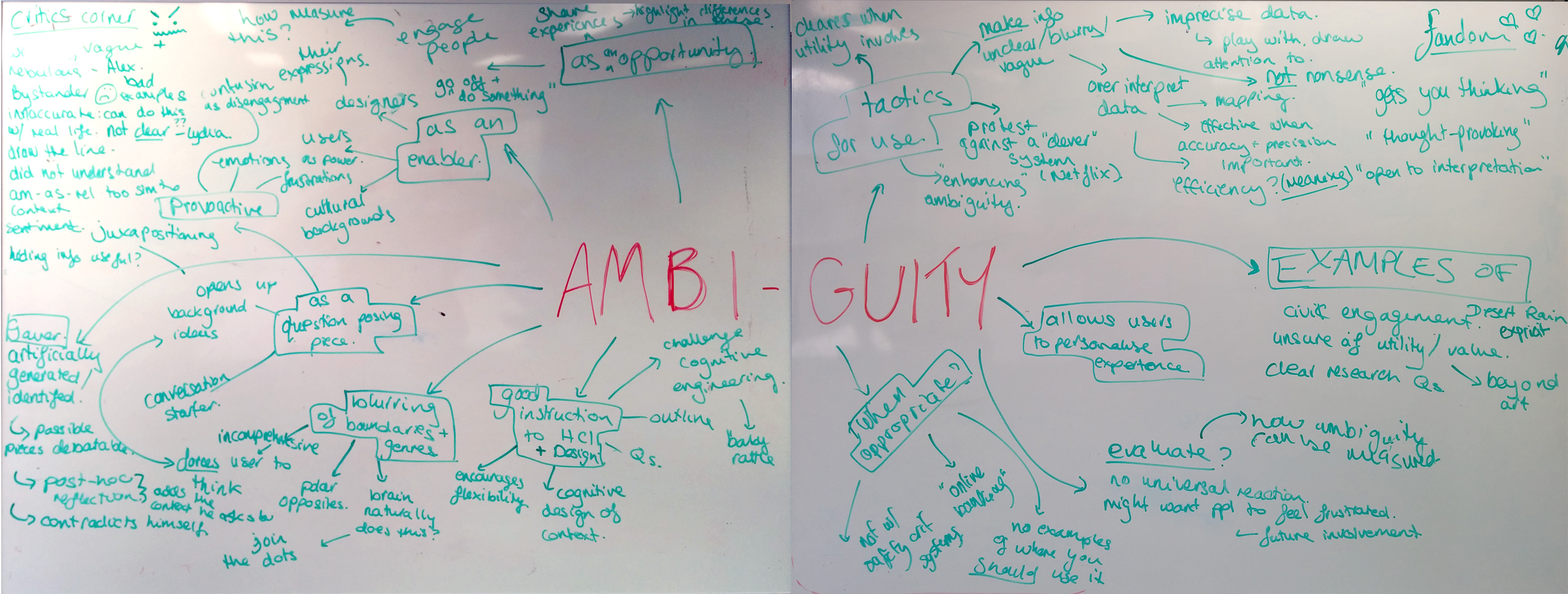Week 1: Introduction to the module
For the first week, we had a general introduction to the module. John gave an overview of what the module aims to do, what the assignments are, and the general structure of sessions. He also talked a little about his way into HCI as a way to illustrate the diversity of the field – and why its interdisciplinary nature means it can be both challenging to study but also very exciting.
We also had an initial foray into HCI literature by reading sections of Gaver et al’s ‘Ambiguity as a Resource for Design‘ paper from CHI 2003. This paper was set as it is one of the most-cited, but also most debated, papers from the “recent” history of HCI. The purpose of reading this was to think carefully and critically about the argument been developed and made by these authors, why they were making it, and in what ways their claims were evidenced. We then collectively mapped out each groups interpretations of the paper:

Tasks for Week 2:
At the end of this first session, you were asked to stay in your groups, and each group was given a different paper to read for the following week:
Group 1: Sean, Alex and Shichao (Staying Open to Interpretation)
Group 2: Dalya, Sarah and Lydia (HCI Research as Problem Solving)
Group 3: Sebastian, Mohyddin and Tom (Human Computer Interaction as Science)
Group 4: Rosie, Dan and Dinislam (The Turn to Practice in HCI)
There are three tasks for next week’s session:
You should (1) each individually read your set paper over the coming week, following the tips and tactics briefly discussed in this first session, and as detailed in the ‘Close and Critical Reading’ section of the Resources page.
After you have read the paper, (2) write an approximately 500 word blog post that is a critical review of the paper (again, use the materials sent around at the start of the module and on the Resources page as an initial guide to help) and upload this onto the website before we meet next week.
Finally, (3) identify one paper that “exemplifies HCI to you”. Make sure the paper is from one of the publication venues listed in the Resources page. Tell us what this paper is at the end of your blogpost, and bring a printed copy with you next week.